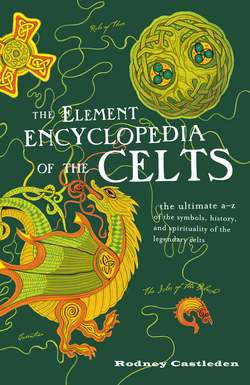Читать книгу The Element Encyclopedia of the Celts - Rodney Castleden - Страница 14
THE CELTS AND THE OCEAN
ОглавлениеThe Celts and their culture are also deeply embedded in their windswept, wave-washed, and rocky landscape. The Atlantic coastline has played a major role in shaping the coastal communities and producing a convergence of mindset. The smell of the sea saturated the lives and histories of these communities. They depended on the richly stocked waters for fish, and for the trade that they made possible. Tribes on opposite sides of the English Channel traded with each other, and trade led to other contacts, including treaties of mutual defense and intermarriage; kinship bonds developed. On the British side of the Channel, the Durotriges, the Iron Age tribe of Dorset, traded with the Coriosolites, who lived on the north coast of Brittany around what is now St. Malo. Coins minted by the Coriosolites have been found at Hengistbury, the Durotrigians’ main port in Christchurch Harbor. The trade route ran by way of the Channel Islands, immediately off the coast and directly between the Coriosolites’ territory and Dorset; coins of the Coriosolites tribe have been found on Jersey. There were lively cross-Channel contacts between 100 and 50 BC; trade that had been going on for 2,000 years. In 80 BC the Durotriges looked across to Gaul when they adopted not only coinage but the simple designs they put on their coins.
After 50 BC there was a downturn in cross-Channel trade, which narrowed the horizons of the Durotriges and left them in a backwater. This was partly a result of piecemeal Roman conquests in Gaul generally and political settlements that left the Hengistbury merchants high and dry. It was probably largely due to an embargo imposed on the Durotriges by Julius Caesar as a punishment for supporting the Armorican rising against him in 56 BC. The people of Iron Age Dorset had felt sufficiently strong kinship with their trading partners across the sea to send warriors in an attempt to stem the Roman invasion of Gaul.
The resistance to Rome was a failure in the end, but it shows the determination of the Durotriges to resist the might of Rome. When the armies of Claudius arrived in Britain 90 years later, the fiercely independent Durotriges were once more among those offering the most aggressive resistance. Even though they were conquered by Vespasian in AD 44, they were still able, 20 years later, during the revolt of another fiercely independent tribe, the Iceni under Boudicca, to offer a potential threat to Rome’s hold on southern Britain.
This snapshot of one tribe’s activities during the first centuries BC and AD shows how a community of Atlantic Celts functioned in relation to other tribes—and not just near neighbors. There were networks of relationships that spread far and wide, thanks to the all-embracing ocean.
The relationship between peoples and the sea helps us to understand what has been called the longue durée: the underlying consistencies that bind communities together and the persistent rhythms that influence their development across long periods of time. The peoples of the Atlantic façade shared common values and beliefs over thousands of years, and this sharing was conditioned to a great extent by their unique habitat on rocky coastlines looking out across the ocean.
A simple Breton verse sums it up:
At sea, all is anguish.
At sea, all is prayer.
To this day, some of the islanders living on the small islands off the Irish coast depend on boats to get them about, yet they do not learn to swim. They surrender to fatalism when they see someone in difficulties in the sea because the sea is claiming its own. “But,” as an Aran islander once said, “we do only be drownded now and again.”
